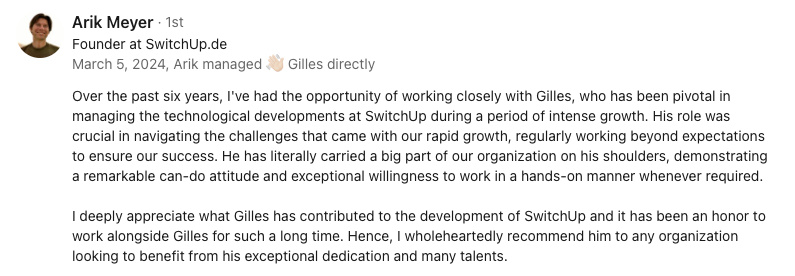Abstract:
The article discusses the complexities startups face in balancing serverless computing with GDPR compliance, emphasizing that this alignment is not merely a legal obligation but a strategic business advantage. It highlights how understanding GDPR's impact on serverless models is crucial for startups to ensure lawful and transparent data processing, which is often challenging due to the nature of data flow in serverless environments. The necessity of Data Protection Impact Assessments (DPIAs) is stressed as they help identify and mitigate privacy risks, thus maintaining a balance between innovation and regulation. Data sovereignty and multi-region deployments are explored as essential strategies for meeting EU data laws, with cloud providers like AWS and Google Cloud offering solutions to keep data within EU borders. The article underscores the importance of choosing EU-compliant providers and implementing technical configurations such as encryption and access controls to secure data. Case studies of companies like Tines and Onfido illustrate the successful integration of serverless architectures while ensuring GDPR compliance. The serverless model's cost efficiency and scalability are presented as tools for growth, allowing startups to adapt quickly and stay competitive in the market. Additionally, the article addresses challenges like vendor lock-in and performance issues, suggesting strategies such as open standards and multi-cloud approaches to maintain flexibility and compliance. Overall, embracing GDPR compliance in serverless computing is portrayed as a strategic asset that can enhance credibility, attract investors, and turn regulatory challenges into growth opportunities.
Navigating data protection can be tricky, especially for startups wanting to use serverless computing. The GDPR makes it even more complicated, requiring careful handling of personal data. For tech startups, it's not just a legal requirement—it's crucial for success. Serverless computing offers scalability and cost efficiency, significantly benefiting European startups by reducing costs and enhancing agility. But how do you ensure it meets GDPR standards? This article explores how startups can use compliance with GDPR to their advantage, covering data sovereignty and multi-region deployments.
The Role of GDPR in Serverless Deployments
Understanding GDPR's Impact on Serverless Computing
The GDPR sets high standards for data protection in the EU, creating challenges for serverless computing. Startups looking to benefit from serverless models must align with these regulations. GDPR demands lawful and transparent data processing, which can be complex in serverless setups where data flow isn’t always clear. Understanding these regulations is essential for startups to confidently use serverless computing while staying compliant and competitive.
The Necessity of Data Protection Impact Assessments (DPIAs)
For startups using serverless environments, DPIAs are vital for identifying and reducing risks in data processing. They help predict privacy risks and ensure compliance with GDPR. DPIAs make systems more resilient by finding vulnerabilities before they become security issues. In dynamic serverless setups, these assessments help maintain a balance between innovation and regulation.
Compliance as a Strategic Business Advantage
Following GDPR is not just legal—it’s a strategic move for startups in the EU market. Investors see strong compliance as a sign of good business practices. By integrating GDPR into their operations, startups avoid legal issues and build trust with investors. This alignment can drive growth and expansion in the European market.
Navigating Data Sovereignty in Serverless Deployments
Understanding Data Sovereignty in the EU
Data sovereignty is key when operating in the EU, especially with serverless computing. EU laws require data to be handled according to local regulations, often staying within EU borders. This isn’t just legal—it’s about protecting privacy and building trust. Serverless architectures must adapt to these rules, ensuring compliance while leveraging the benefits of serverless tech.
Leveraging Multi-Region Deployment for Compliance
Cloud providers offer multi-region deployment, letting startups keep data where they need it. This helps comply with EU data laws while using serverless architectures. Services like AWS and Google Cloud allow apps and data to be deployed in specific regions, keeping data within EU borders. Startups can use these features to ensure compliance and improve operational efficiency.
Configuring Serverless for EU Data Residency
Choosing EU-Compliant Providers
Picking the right cloud provider is crucial for meeting EU data residency rules in serverless setups. Providers like OVHcloud and T-Systems offer GDPR-compliant solutions, focusing on data privacy and security. This helps companies operate without breaking data residency laws. By choosing providers committed to GDPR, startups can scale operations while staying legally secure.
Implementing Key Technical Configurations
Technical choices are as important as picking a cloud provider. Storing data in EU-based centers, strong encryption, and strict access controls are key for compliance. Encryption protects data and aligns with GDPR. Access controls ensure only authorized access to sensitive info, supporting data protection principles. These strategies secure data and align with EU regulations and best practices.
Security and Privacy Best Practices for Serverless in Europe
Integrating Security Measures
- Encryption: Essential for protecting data in transit and at rest. AWS and Azure offer robust encryption protocols to help maintain GDPR compliance.
- Access Controls: Implement identity and access management (IAM) to ensure only authorized personnel access sensitive data. Regularly review and update access permissions.
- Regular Security Audits: Use tools like AWS audit logging to identify risks before they become breaches, ensuring ongoing compliance and security.
Case Studies of Successful Implementations
In Ireland, Tines uses serverless architectures like AWS Lambda for security and scalability. Their zero-trust architecture ensures data is encrypted at rest and in transit. Regular audits help maintain GDPR compliance.
In the UK, Onfido uses serverless computing for identity verification, focusing on privacy-by-design. This improves data protection and streamlines operations, showing that compliance boosts efficiency.
Leveraging Serverless for Competitive Advantage
Serverless as a Tool for Growth
The serverless pay-as-you-go model cuts costs by eliminating idle resources, allowing startups to redirect savings into growth. An IDC report shows companies using serverless see significant cost reductions, fueling growth and innovation. Serverless enhances agility, helping startups adapt to changes and customer needs.
Serverless computing allows quick deployment and scaling, reducing time-to-market. New features can launch instantly, unlike traditional models. This agility lets startups improve products based on real-time feedback, staying competitive. Serverless scalability helps manage demand spikes without losing performance.
Aligning Serverless with EU Regulations
Serverless platforms come with security features and compliance tools that align with GDPR. AWS Artifact and Google Cloud Compliance Reports Manager provide resources for maintaining data security and privacy. This helps businesses focus on innovation while staying compliant.
Serverless platforms also support data residency, processing data within EU borders. This is essential for legal compliance and customer trust. Configuring serverless functions for specific regions ensures GDPR compliance while taking advantage of serverless flexibility.
Addressing Challenges in Adopting Serverless for EU Compliance
Overcoming Vendor Lock-In and Performance Issues
Vendor lock-in can limit flexibility and complicate compliance. Using open standards and multi-cloud strategies can help. Frameworks like OpenFaaS offer portability, easing provider switches. A multi-cloud approach spreads workloads, reducing dependence on one provider and helping maintain compliance.
Performance issues like cold start latency affect user experience and compliance with real-time data requirements. Function warming strategies reduce latency, keeping functions ready for instant use. Cloud provider tools optimize performance, ensuring smooth and compliant operations.
Ensuring Compliance Amidst Challenges
In serverless setups, GDPR compliance needs a focus on data encryption and access controls. Strong encryption secures data, meeting GDPR requirements. Rigorous access controls ensure only authorized access, crucial in dynamic setups. These measures strengthen compliance and cybersecurity.
Regular audits and compliance reviews ensure ongoing regulation adherence. They involve assessing data processing activities to align with legal requirements. Using audit tools simplifies this, helping identify compliance gaps. Routine audits secure operations and build trust with customers and partners.
Embracing GDPR compliance in serverless computing is more than ticking boxes; it's a strategic asset. Understanding GDPR standards can turn challenges into growth opportunities. Tools like DPIAs and multi-region deployments aren't just necessities—they’re pathways to building resilient systems. Aligning operations with GDPR enhances credibility and attracts investors.
You might be interested by these articles:
- Innovative Approaches to DevOps in a Serverless Computing Environment
- Serverless Computing Advancements
- Next-Gen Serverless Computing Insights





